
We headed to the archaeological site of Bobastro in the north of the province of Malaga, specifically the municipality of Ardales, to learn about the history that led to the construction of the only Mozarabic church in all of Andalusia. The stone-cut church in question was just over 14 m. long, 9 m wide, basilica plan with a tripartite nave and was equipped with the usual horseshoe arches of this pre-Romanesque style.
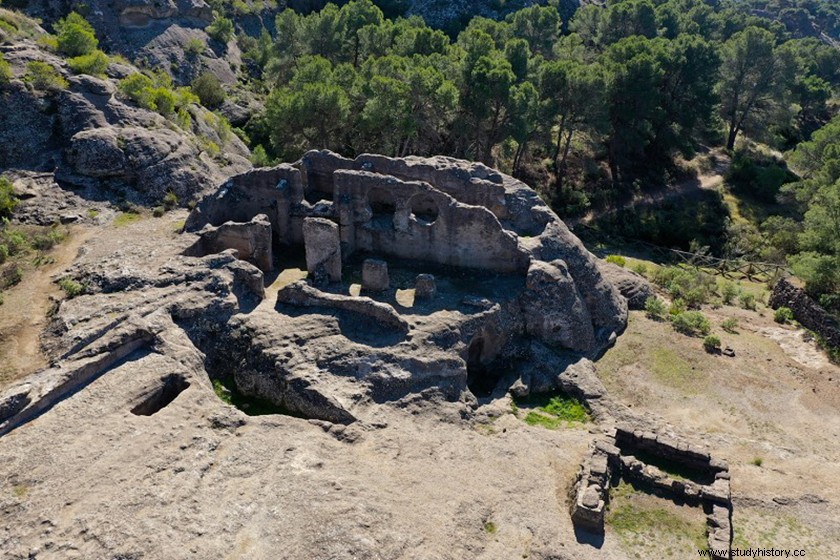
Remains of the Mozarabic church of Bobastro.
The fact of finding it meant the confirmation that the Hafsún family treasured great power in the final period of the emirate of Córdoba. This family of muladí origin, adopted Christianity as a resource to fight against the Umayyad emir. It is symptomatic that it was not the only church in the village of Bobastro, since the presence of places of Christian worship has been confirmed even in the Alcázar del Castillón, seat of the Hafsún family. . With the adoption of Christianity, he was able to seek adherence to the cause of the ancient Visigothic families, both the converted Muladís and the Mozarabs. But the sources are not very clear about it, and we can doubt if the conversion to Christianity was a cause or effect of his fight against the Emirate of Córdoba. The truth is that over time it managed to attract numerous followers and it is estimated that more than 1,500 people lived in Bobastro.
The crisis in the emirate of Córdoba.
More than a century had passed since Abderramán I prevailed over the rest of his Muslim rivals, who tried to establish themselves as political leaders of Al-Andalus, and founded the emirate of Córdoba. We can consider this emirate as the first centralized state that the Muslims established in the Peninsula, based on social support, religious unanimity and especially a powerful army made up of Frankish, Hispanic or Berber slaves.
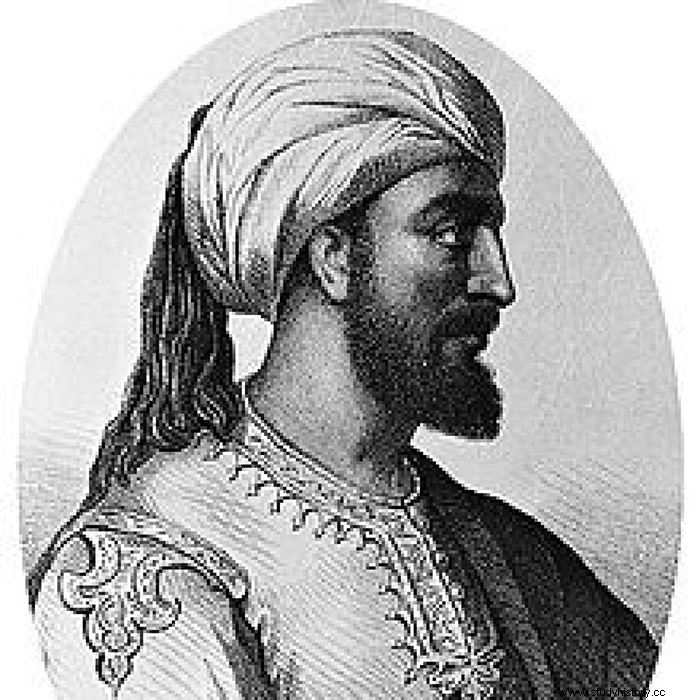
Abderramán I
At the end of the 9th century, with the heirs of Abderramán I , the emirate of Córdoba was going through its lowest hours. After the death of Muhammad I , his children were not up to the task, nor was Al-Múndir , nor Abd-Allah they knew how to contain the onslaughts that came to them from the very interior of the Caliphate. What the Christians of the north had not achieved, despite their notable advances, or the Vikings who attacked along the Guadalquivir, the muladís who exercised power in certain Islamic territories were now about to achieve. On the Ebro river, Banu Qasi self-proclaimed "the third king of Spain", in Mérida, one of the most important cities of Hispania, Ibn Marwan became independent from the central power, and of course our protagonist today, Umar ben Hafsun a revolt began in the Serranía de Ronda. The caliphate was crumbling at times and the centralism of Córdoba was in serious danger.
Bobastro with Umar ben Hafsun.
Umar ben Hafsun He was born in the Serranía de Ronda, in the year 854 and in a family of Visigoth descendants. He grew up among the stories that his uncle told him, referring to the Muslim conquest of the Peninsula, or the repression of the Arabs against the lower layers of society, without distinction of race or religion, since they gave themselves a supposed superiority.
Contempt for the Arabs grew within young Umar, and he soon became a rebel who rode through the mountains at the head of a gang, in order to collect booties for his cause. In one of the skirmishes he murdered a peasant and faced with possible reprisals, advised by his uncle, he took refuge in a small, half-abandoned village, Bobastro. As soon as he got there, he must have realized the enormous defensive possibilities of that place, from the highest part of that hill, where there was an old Roman castle, the Cordovan countryside could be seen to the north and looking to the south one could see the Mediterranean Sea.
When he settled there he also understood that his objectives had to be others, at least more selective, from that moment he decided to attack only the richest Arabs, he could not antagonize the rest They could be very useful to you. Umar ben Hafsun he was now in his early 20s, so we can think he made a youthful mistake. His future prey was going to be the son of the governor of Malaga, whom he ambushed in the vicinity of the Guadalhorce river, he quickly escaped protected by his slaves, and immediately afterwards the head of Umar already had a price. He had no other choice but to emigrate seeking refuge in Africa.
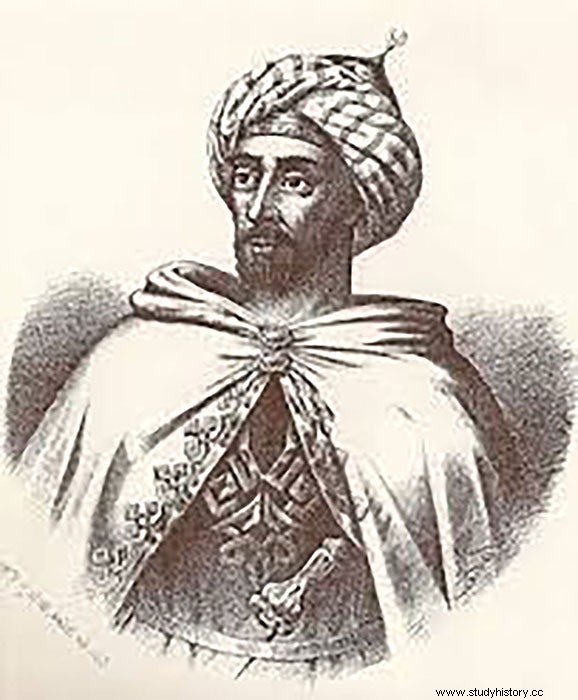
Hypothetical image of Umar ben Hafsún, the lord of Bobastro
he came back a year later to settle again in Bobastro. Now, with the help of his uncle, he decides to take a new step, that of going from being the head of a gang to becoming a military leader with the determination to finish off the emir of Córdoba. He again toured the Sierra de Ronda now recruiting an army of muladís and Mozarabs. His first action was to defeat the army of the governor of Malaga on the battlefield, which ended up being dismissed by the Cordovan emir. Thanks to the charisma that he acquired Umar ben Hafsún Soldiers willing to join his cause reached Bobastro.
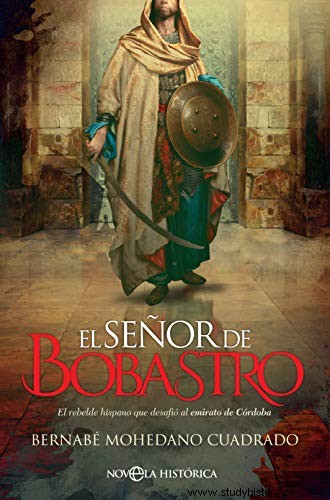
Collaborate with us by buying this book.
Umar ben Hafsun, the leader.
But the emir Muhammad I he reacted quickly. He attacked the lands near Bobastro, where many of the families of Umar's new soldiers lived. This did not have the army prepared to face the emirate in the open field, and the only solution to the possible massacre was to surrender and serve the emir. He thus traveled to the north of the Peninsula to face the Christian armies of Alfonso III and muladís of Banu Qasi , obtaining two victories and arriving in Córdoba to receive the honors of Muhammad I.
The emir's joy did not last long. Umar escaped, gathered some of his men and put an end to the resistance that the Umayyad emir had placed in Bobastro. Since then his popularity has risen steadily. Mozarabs and muladís, they recovered their leader, also with the lesson well learned. From that moment on, he successively took Mijas, Álora, Banamejí and Archidona, ordering the construction of watchtowers and defensive walls to make a great cordon around Bobastro.
In the following years he continued to conquer Umayyad places, like Ronda itself. Other gentlemen joined his cause such as Linares, and he even contacted Ibn Marwan in Mérida to carry out joint work against the emirate. Soon some Umayyad coras decide to change sides, joining the new power of the lord of Bobastro, such as Cabra. In such a way that in the year 887 his domains reached Baena.
At that time Umar ben Hafsun he was a very dangerous rival, and the new emir Al-Múndir , after the death of his father, he goes to the front of his army to Bobastro. He did not manage to arrive, according to the "evil tongues" he died poisoned by his own brother Abd Allah , who proclaimed himself emir in the same camp, immediately afterwards the Umayyad troops return to Córdoba, the new king of al-Andalus was not in the business of defending his territories. Only a year later, Umar controlled Osuna, Estepa, Ecija or Aguilar, the city of Córdoba was barely a day's ride away, and the raids of the men ofHafsún they reach the outskirts of the Andalusian capital.
It seemed like the right time to conquer Córdoba and put an end to the emirate. The direct confrontation between the two armies took place in the vicinity of the current Aguilar de la Frontera. The result was a surprise for Umar ben Hafsun , since the emir's army was still much superior, and apparently not in number, but in experience in pitched battles. Even Umar was about to die, after a large number of his men fell, he was forced to take refuge in the fortress of Poley. That same night they secretly took him out and a small group of his personal guard accompanied him to Bobastro. The next day the fortress was taken, and more than 1,000 men were killed by the emir's army.
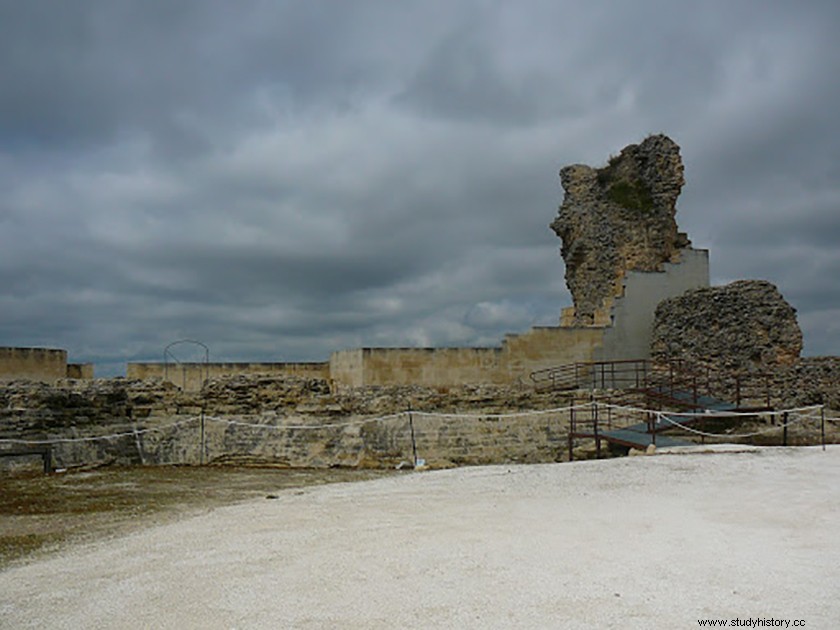
Currently the fortress of Poley in Aguilar de la Frontera
Samuel de Bobastro.
The following years were of endless fights, long sieges, recovery of territories and subsequent losses. Neither of the two contenders exercised a clear superiority. Highlight a fact that would change the future of Bobastro. It happened in Seville, it was the murder of Mohammed governor of the city, and eldest son of the emir Abd Allah , at the hands of the latter's men, that day he orphaned a 4-year-old boy, his name Abderramán .
The year 898 brought enormous punishments to Al-Andalus. An enormous drought produced famine and deaths, all aggravated by the arrival of an epidemic of plague. Even Umar ben Hafsun he ended up infected, and after recovering he decides to embrace Christianity. He took the name of Samuel, in his decision he was accompanied by his wife and three of his children, at least two others continued to process the Muslim faith. In those days the construction of the main church of Bobastro would be undertaken, a few years later at the request of Samuel's youngest daughter, Argentea, the construction of a monastery next to it began.
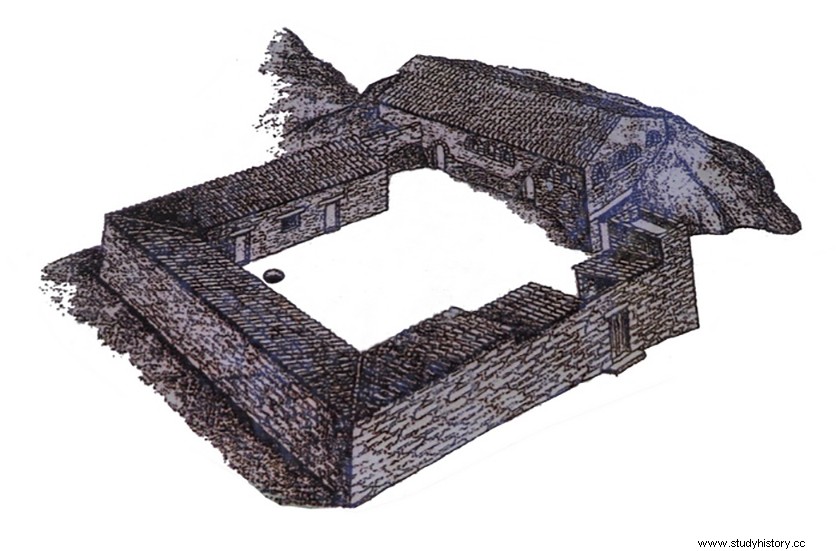
Reconstruction of the church and monastery of Bobastro.
Samuel's new religion would bring him some inconveniences, losing some support both in Al-Andalus, and especially in North Africa. It was time to seek new alliances, and above all at a higher level. Faced with his new condition, he sent the Asturian king Alfonso III his baptism certificate and the determination of mutual support to end the emirate, apparently he never received an answer.
Samuel's death.
After a series of years where the sources are quite brief, an event in Córdoba will mark the fate of Bobastro, it was the year 912 and his emir died. The heir was that 4-year-old boy who was orphaned in Seville, who was proclaimed emir of Al-Al-Andalus at the age of 21, his name Abderramán III . The following year at least 70 fortresses passed from the hands of Samuel to those of the new emir. His tactics were based on intelligence. He knew perfectly well how to subtract power from the lord of Bobastro. He granted general pardon to the men who had followed Umar, endowed them with succulent salaries to integrate his new army and offered positions in the administration to Christians and Mozarabs. Tax cuts were generalized, a new air was coming from Córdoba, and it was precisely not very favorable for an insurgent.

Abderramán III, the first Caliph of Córdoba.
In the year 914 Samuel loses his connection in Malaga with the Mediterranean, from where the supplies for his small state came to him. The population of Malaga was more faithful to the new emir than to the rebel from Bobastro.
The following years passed between new droughts, plagues, and a necessary truce signed by both contenders. On February 1, 918, after a long illness, Umar ben Hafsun died. , Samuel was buried under the Christian rite and his son Yaffar it is done with the reins of Bobastro.
The end of Bobastro.
Umar's death was an opportunity for Abderramán III to break the truce. His first objective was the castle of Belda, today located in the municipality of Gaucín (Málaga), his position opened a door to Algeciras for the inhabitants of Bobastro, as a new supply point for the rebels. The castle's Muslims soon abandoned it and only 170 Christians remained to defend it. After several days of siege the castle was taken and all its occupants had their heads cut off. It was not the only display of cruelty of the renewed army of the Umayyad emir, since wherever they passed they devastated their fields, burned churches and murdered all the residents of the suburbs.
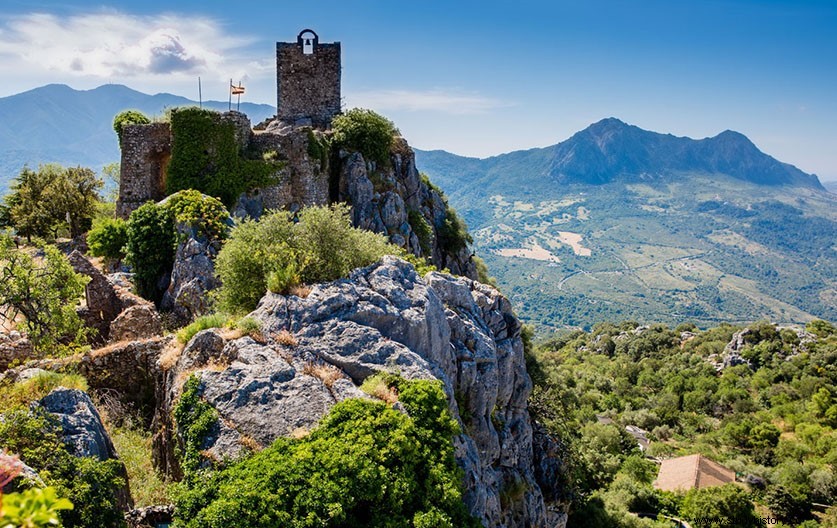
Belda Castle in Gaucín
The castles in the hands of the Hafsún family they did not stop falling and in the month of June of the year 920 the one of Álora falls, its position was also key, since from there there was a free path to Bobastro. No solution of continuity Yaffar ask Abderramán for a new truce, he grants it.
We enter a confusing period in Bobastro's history. The heirs of Hafsun They perform a series of strange movements. On the one hand, one of them Hafs ben Umar ben Hafsún surrenders to the emir of Córdoba after leaving his castle of Turrush. In following term Yaffar he is assassinated in his own fortress, his assassins are unknown, but it is believed that they were his own Christian servants, after the abandonment of Y affar of the Christian religion. The truth is that, upon his death, Sulayman , another of the brothers who at that time served the Emir of Córdoba himself, is appointed by this gentleman of Bobastro. Perhaps he thought that the long struggle against the insurgent state would come to an end with such a designation, but Bobastro was well worth resisting.
Certainly the following years Abderramán III most of the territories that continued to offer obedience to the Hafsun family were conquered . Said territories, campaign after campaign, were considerably reduced, but Bobastro remained his impregnable capital, there were numerous attempts by the Umayyad troops to control it, but all ended in failure. Thus passed the decade that began in the year 920, it is true that the emir ventured into other lands, in those years he fought in the north with the Christian kingdoms of Navarra and León, in addition to controlling the heirs of Ibn Marwan in the land of Extremadura.
But his “Achilles heel” was still there. In the year 927 he decides to lend all his strength to finish off Bobastro. The siege was total, in the vicinity of the rebel city he built various defensive towers to place small detachments, which controlled all the entrances and exits of Bobastro. Sulayman himself was a victim of this control, when leaving the city to visit a nearby convent he was approached by an Umayyad contingent, after falling from his horse he was arrested and taken to Córdoba, yes, in two parts, on the one hand, the body and on the other his head.
He was succeeded by another of the brothers, possibly, although the sources are not clear, the most cowardly. Hafs ben Umar ben Hafsun , which six months later hands over the city. Bobastro was not taken by the Umayyad army, it was abandoned by its inhabitants. On his arrival in Córdoba, Hafs ben Umar ben Hafsún he is forgiven and covered with all kinds of honors. At the same time that Abderramán III left for the rebel city. Upon arrival there, according to Umayyad sources, he was impressed after touring the town, praising the elevation and impregnability of Bobastro. Immediately afterward, he ordered the destruction of everything, walls, mosques, churches or the fortress of the Hafsún family. . Not without first looting the tomb of Umar ben Hafsun , his remains were taken to Córdoba and crucified in the midst of two of his sons, Hakim and Sulayman himself .
Recommended reading:
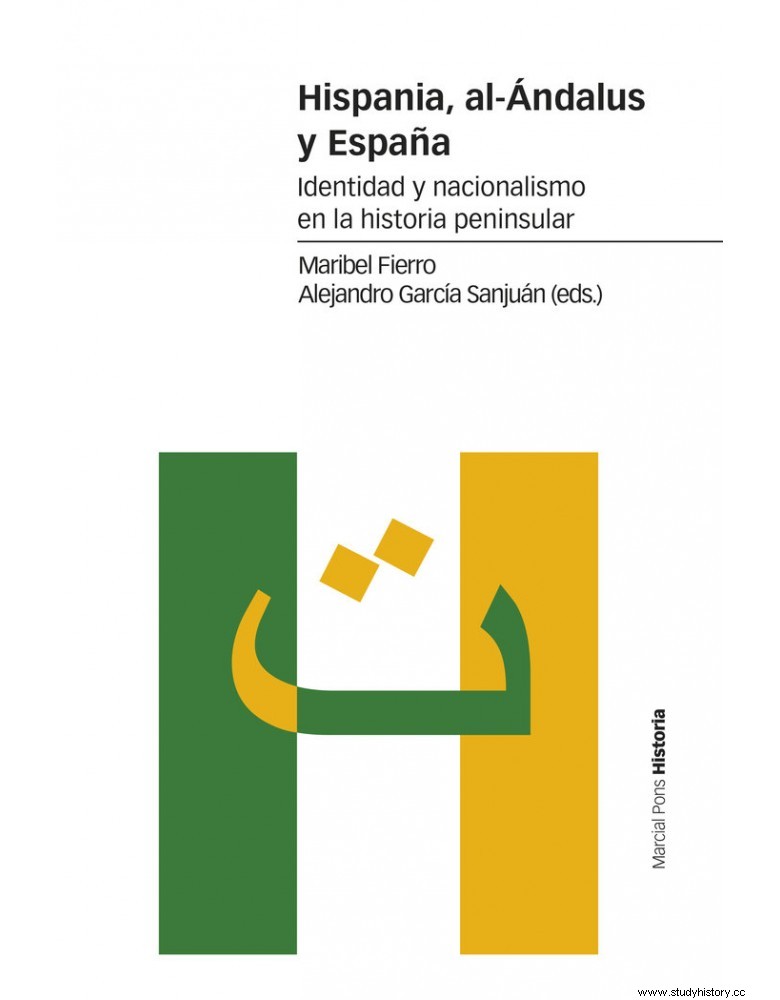
Buy Hispania, al-Andalus and Spain.
More info:
History of Spain in the Middle Ages, Cood. Vicente Ángel Álvarez Palenzuela, Ed. Ariel, 2011.
The Surrender of Bobastro, Joaquín Vallvé Bermejo
Omar ben Hafsún, the rebel from Bobastro, Carmen Panadero Delgado.
